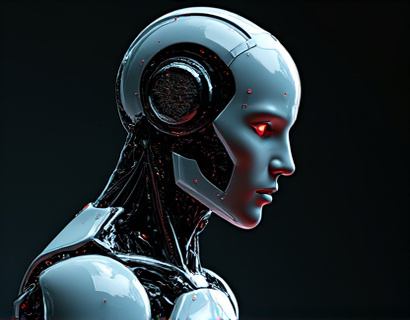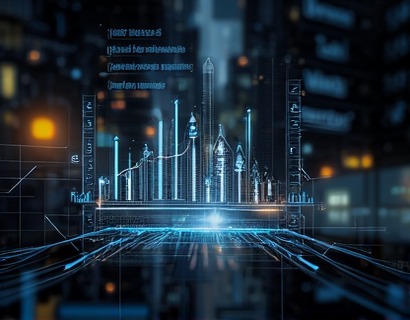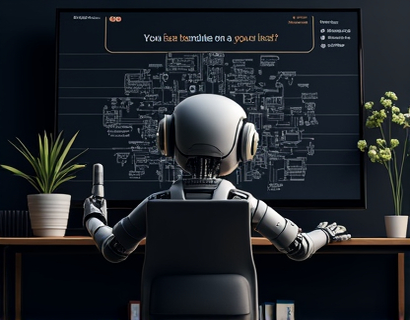Smart Home Revolution: Embracing the Future of Living
The modern home is undergoing a profound transformation, driven by the rapid advancement of technology and the growing demand for convenience and efficiency. The smart home revolution is not just a trend but a significant shift in how we live and interact with our living spaces. This article delves into the latest innovative appliances that are redefining modern living, offering a glimpse into a future where technology and practicality seamlessly blend to enhance our daily lives.
The concept of a smart home extends beyond mere convenience; it represents a holistic approach to living that prioritizes efficiency, sustainability, and comfort. Smart appliances are at the heart of this revolution, integrating seamlessly into our daily routines to make tasks easier, more efficient, and often, more enjoyable. From intelligent thermostats to automated lighting systems, these devices are designed to learn from our habits and adapt to our preferences, creating a living environment that is both smart and intuitive.
Intelligent Home Automation
One of the most exciting aspects of the smart home revolution is the advancement in home automation. Smart thermostats, for instance, are not just about adjusting the temperature; they are sophisticated devices that learn your schedule and preferences to optimize energy usage. These thermostats can be controlled remotely via smartphones, ensuring your home is always at the perfect temperature when you arrive. This not only enhances comfort but also significantly reduces energy bills.
Smart lighting systems take automation to the next level. These systems allow you to control the brightness, color, and even the timing of your lights with the touch of a button or through voice commands. Some advanced systems can simulate natural light patterns, helping to regulate your circadian rhythm and improve sleep quality. The integration of motion sensors ensures that lights turn on and off automatically, adding an extra layer of convenience and security.
Voice-Activated Assistants
Voice-activated assistants have become a cornerstone of smart home technology. Devices like smart speakers and virtual assistants can control various smart devices throughout the home with simple voice commands. This hands-free control is particularly beneficial for individuals with mobility issues or those who prefer a more hands-free lifestyle. From setting reminders and alarms to playing music and controlling smart home devices, these assistants have become indispensable in modern households.
The integration of voice-activated assistants with other smart devices creates a cohesive ecosystem that enhances the overall smart home experience. For example, you can ask your assistant to adjust the thermostat, turn on the lights, and start your favorite music all with a single command. This level of integration not only simplifies daily tasks but also makes the smart home more accessible and user-friendly.
Smart Kitchen Appliances
The kitchen is often the heart of the home, and the smart home revolution has not overlooked this essential space. Smart kitchen appliances are designed to make cooking and meal preparation more efficient and enjoyable. Smart refrigerators, for instance, go beyond just keeping your food cold. Equipped with built-in cameras and inventory management systems, these refrigerators can track what you have, suggest recipes based on available ingredients, and even order groceries online when items are running low.
Smart ovens and stoves offer precise temperature control and cooking modes, ensuring that your meals are cooked to perfection every time. Some models come with touch screens and Wi-Fi connectivity, allowing you to preheat, monitor cooking progress, and even start cooking from your smartphone. Induction cooktops, another innovative appliance, use electromagnetic fields to heat cookware directly, providing faster and more energy-efficient cooking.
Health and Wellness Integration
The smart home is not just about convenience; it is also about enhancing health and wellness. Smart health monitors and wearable devices can integrate with your home's ecosystem to provide a comprehensive view of your well-being. For example, smart scales can track your weight, body composition, and even monitor vital signs like heart rate and blood pressure. This data can be shared with your smart home system to adjust lighting, temperature, and even play soothing music to create a relaxing environment after a workout.
Air quality monitors are another crucial component of a smart health-focused home. These devices detect pollutants and allergens in the air, providing real-time feedback and recommendations to improve indoor air quality. Some advanced systems can automatically activate air purifiers when poor air quality is detected, ensuring a healthier living environment.
Security and Safety Enhancements
Security is a top priority for homeowners, and the smart home revolution has brought significant advancements in this area. Smart security cameras with night vision and motion detection provide real-time monitoring of your home, sending alerts to your smartphone if any unusual activity is detected. These cameras can be accessed remotely, allowing you to check in on your home from anywhere.
Smart locks offer a higher level of security and convenience. These locks can be controlled via your smartphone, allowing you to grant temporary access to guests or service providers without the need for physical keys. Some models also provide activity logs, giving you a detailed history of who has entered your home and when.
Smoke and carbon monoxide detectors are now smarter than ever, integrating with your home's network to send instant alerts to your phone in case of an emergency. This immediate notification can be a lifesaver, especially when you are away from home.
Energy Efficiency and Sustainability
The smart home revolution is not only about convenience and security; it is also about sustainability. Smart energy management systems play a crucial role in reducing energy consumption and lowering carbon footprints. Smart meters provide detailed insights into your energy usage, helping you identify areas where you can save energy and money.
Solar panel systems integrated with smart home technology can optimize energy production and usage, storing excess energy in batteries for use during peak hours or when the sun is not shining. This not only reduces reliance on the grid but also contributes to a more sustainable future.
Smart irrigation systems are another example of how technology can promote sustainability in the home. These systems use weather data and soil moisture sensors to water your garden efficiently, ensuring that plants receive the right amount of water without waste.
Challenges and Considerations
While the benefits of smart home technology are undeniable, there are several challenges and considerations to keep in mind. One of the primary concerns is privacy and security. With numerous devices connected to the internet, the risk of data breaches and unauthorized access increases. It is essential to choose reputable brands that prioritize security and to implement strong password practices and regular software updates.
Another consideration is compatibility. The smart home ecosystem can be complex, with devices from different manufacturers often using different protocols and standards. Ensuring that your devices work together seamlessly requires careful planning and sometimes, the use of hubs or central control systems.
Cost is also a factor, as high-end smart appliances can be expensive. However, the long-term savings on energy bills and the increased value of your home can offset these initial costs. It is important to prioritize the devices that offer the most significant benefits for your lifestyle and budget.
Future Trends and Innovations
The smart home revolution is constantly evolving, with new technologies and innovations on the horizon. One exciting area is the integration of artificial intelligence (AI) into smart home devices. AI-powered assistants can learn from your habits and preferences to predict and automate tasks even more effectively. For example, an AI system could anticipate your arrival home and adjust the lighting, temperature, and even start your favorite music based on your past behavior.
Another trend is the development of more intuitive and user-friendly interfaces. As technology advances, the need for complex setup processes and technical knowledge is diminishing. Voice commands, gesture recognition, and even brain-computer interfaces are being explored to make smart home control more natural and effortless.
The Internet of Things (IoT) is also expanding, with more devices becoming interconnected and intelligent. This interconnectedness will lead to more sophisticated home automation scenarios, where multiple devices work in harmony to create a seamless and personalized living experience.
Conclusion
The smart home revolution is transforming the way we live, making our homes more convenient, efficient, and sustainable. From intelligent thermostats and voice-activated assistants to smart kitchen appliances and advanced security systems, the latest innovations are redefining modern living. While there are challenges to consider, the benefits of a smart home are undeniable, offering a future where technology enhances our daily lives in meaningful ways. As the technology continues to evolve, the potential for even more innovative and integrated smart solutions is limitless, promising a future where our homes are not just places to live, but extensions of ourselves.










































